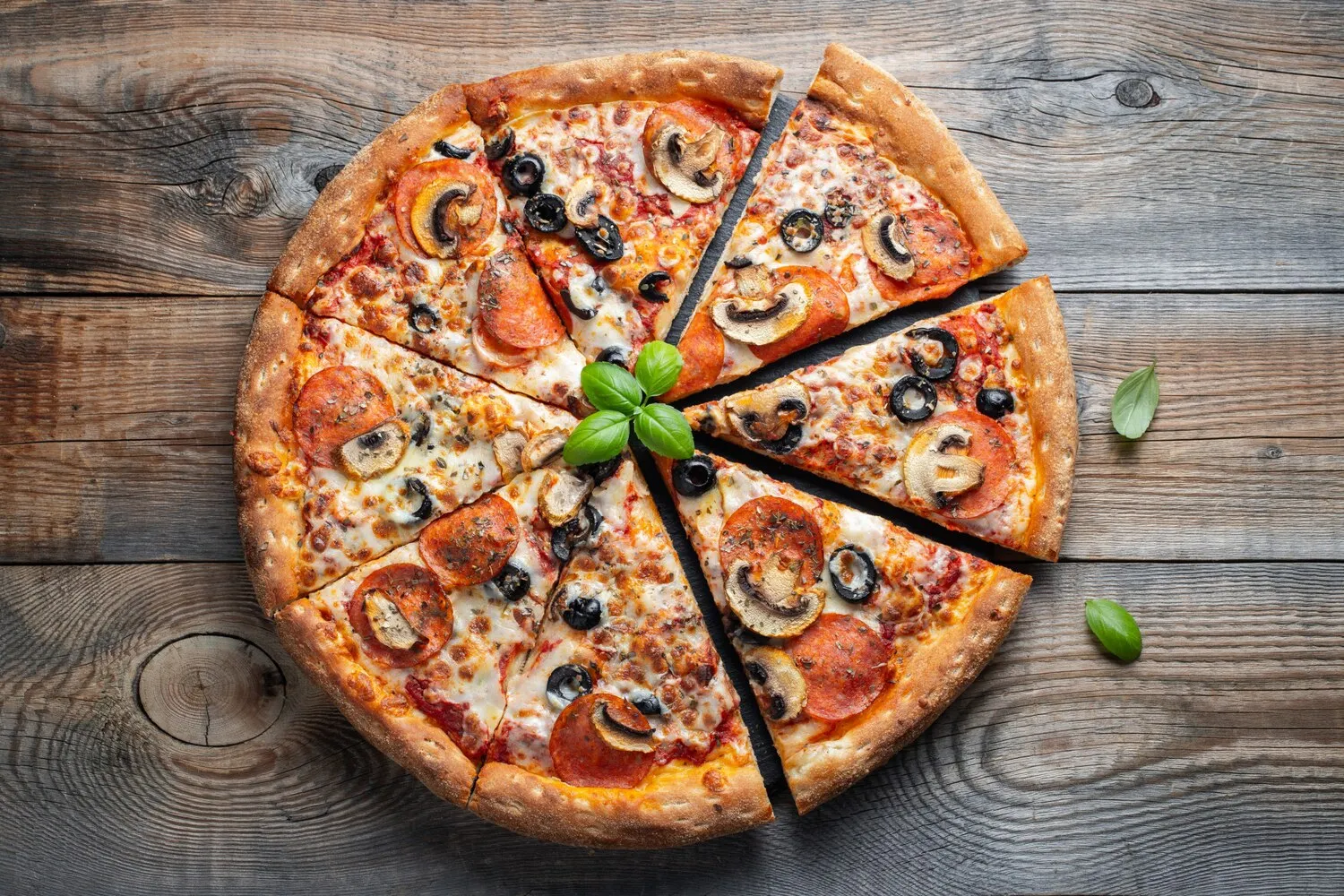
Pizza
They offer pizza, too.
Nutrition Facts
* The % Daily Value (DV) tells you how much a nutrient in a serving of food contributes to a daily diet. 2,000 calories a day is used for general nutrition advice.
Pizza's origins can be traced back to ancient civilizations that used flatbreads as a staple food. Ancient Greeks, Egyptians, and Romans all enjoyed flatbreads with various toppings. However, the modern pizza as we know it evolved in Naples, Italy, during the 18th and 19th centuries, when tomatoes were added to the flatbread, creating a dish for the working class.
Pizza has become a global culinary phenomenon, transcending its humble beginnings to become a symbol of comfort food, social gatherings, and cultural exchange.
A Social Food
Pizza is often shared among friends and family, making it a popular choice for parties, celebrations, and casual get-togethers.
Regional Variations
Different regions have developed their own unique pizza styles, such as the thin-crust New York-style pizza, the deep-dish Chicago-style pizza, and the Sicilian-style pizza with its thick, rectangular crust.
Pizza in Popular Culture
Pizza has become deeply ingrained in popular culture, appearing in countless movies, TV shows, and advertisements. It is often associated with fun, indulgence, and nostalgia.
Pizza offers a diverse range of flavors, primarily derived from the combination of a savory base, tangy tomato sauce, creamy cheese, and various toppings, often enhanced with herbs and spices.
The foundational flavor of pizza comes from the yeasted dough, providing a slightly tangy and chewy base. Tomato sauce introduces acidity and sweetness, often complemented by herbs like basil and oregano. Mozzarella cheese, a staple on many pizzas, offers a mild, milky flavor and a stringy texture when melted. Toppings can range from savory meats like pepperoni and sausage to vegetables like mushrooms, onions, and peppers, each adding its unique flavor profile. Spices like garlic, red pepper flakes, and Parmesan cheese can further enhance the overall taste.
Dough Preparation
Use high-quality flour and allow the dough to proof properly for optimal flavor and texture. Kneading the dough thoroughly develops gluten, resulting in a chewy crust.
Sauce Application
Use a light hand when applying the tomato sauce to prevent a soggy crust. Consider using a sauce made with fresh tomatoes for a brighter flavor.
Cheese Selection
Use high-quality mozzarella cheese, either fresh or low-moisture, depending on your preference. Fresh mozzarella provides a creamier texture, while low-moisture mozzarella melts more evenly.
Oven Temperature
Bake the pizza at a high temperature (450-500°F) for a crispy crust and melted cheese. Using a pizza stone or baking steel can help achieve even heat distribution.
Explore additional Pizza dishes and restaurants
Explore PizzaDiscover top dining spots and culinary experiences in Göteborg.
Explore GöteborgLearn more about the food culture, restaurant scene, and culinary heritage of Sweden.
Explore Sweden